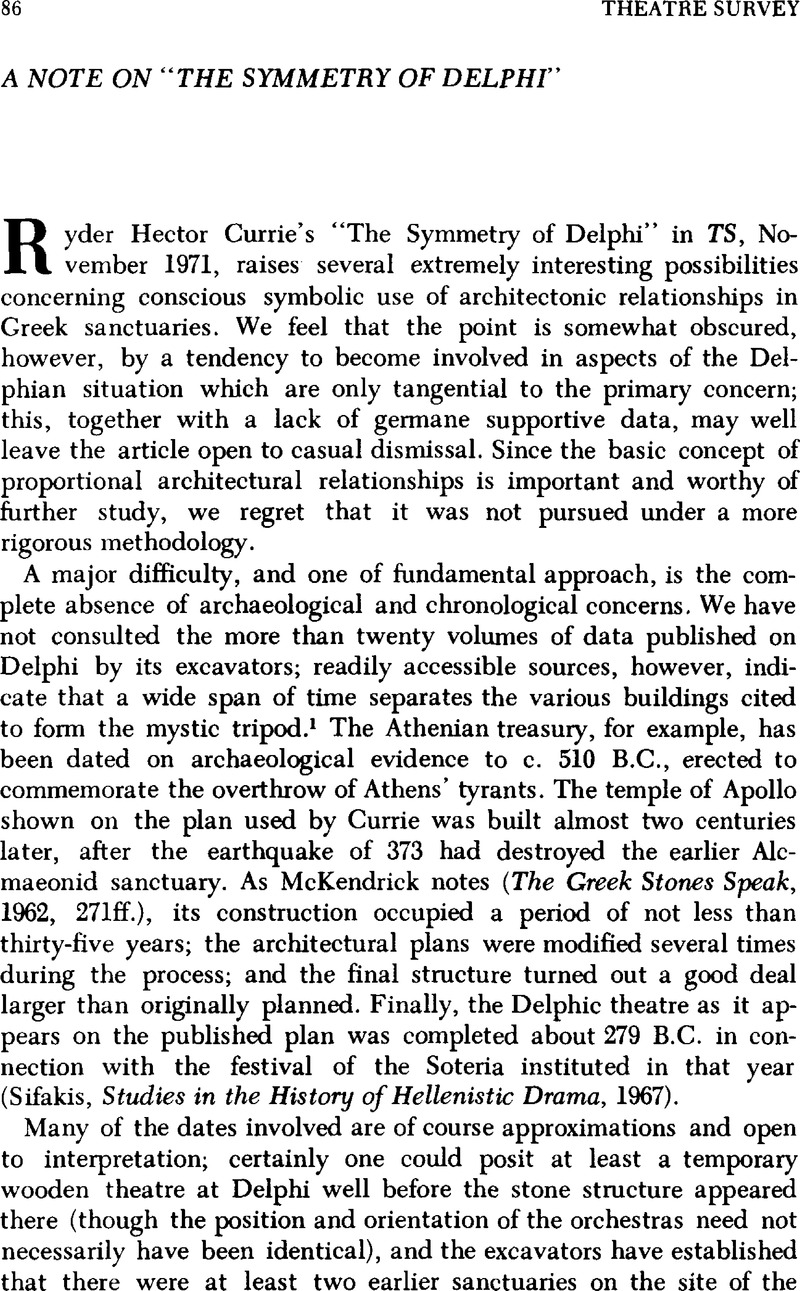No CrossRef data available.
Article contents
A Note on “The Symmetry of Delphi”
Published online by Cambridge University Press: 07 July 2009
Abstract

- Type
- Notes and Comment
- Information
- Copyright
- Copyright © American Society for Theatre Research 1972
References
Notes
1. In passing, Mr. Currie spends a great deal of space, with many allusions scattered from Homeric myth to Buckminster Fuller, in establishing the triad as the mystic shape basic to nature; he does not appear to have considered that the tripod entails four points, not three, and that the triadic form indicated both by Anaximander and by the myth of Zeus' eagles crossing at Delphi describe a linear rather than circular or angular tensiveness. Moreover, it is hardly relevant here that atomic theory postulates a six-electron carbon ring; what matters is not ‘truth’ in an absolute sense, but what the Greeks regarded as true.
2. It should be noted that the Amphictyonic Council, under whose auspices the reconstruction proceeded, continued to meet throughout the period of Phocian dominance. However, the absence of the representatives of Thebes and Thessaly, states with which Phocis was at war, further complicates the problem of political—as opposed to theocratic—control.




